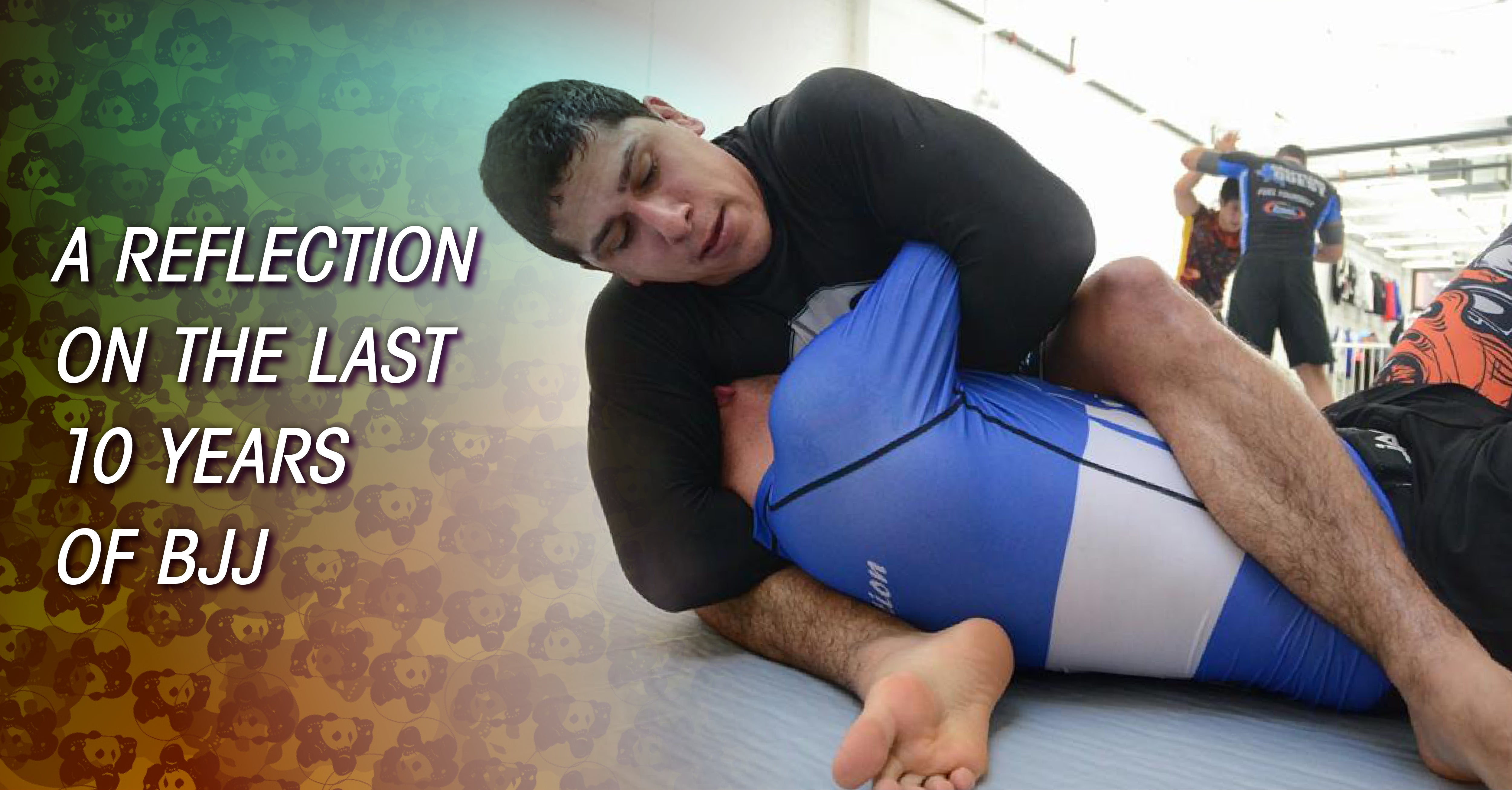
A Reflection on 10 Years of Brazilian Jiu-Jitsu

In October, I passed the ten-year mark for my BJJ career. As cliche as it sounds, I feel like I was a white belt yesterday, but as I look around, the friends I came up with are mostly black belts now or stopped training altogether. Some of my favorite tournaments are not around anymore, many of my favorite grapplers have either retired or moved on to MMA, and furthermore the sport itself looks different, and it’s not just the fancy new blue mats IBJJF uses at Worlds. The techniques being used have sure changed. Fearing sounding like a crotchety old man—Here are 10 things that have changed in the last 10 years:
- IBJJF has become a monster organization. When I started, IBJJF held Pans and Worlds in the US that was it. Now they have multiple tournaments gi and no-gi all over the world. Their rule set has become the standard for not only smaller tournaments but also for what is taught at many BJJ schools. Blue belt divisions at Worlds have some 100+ competitors. Recently I have been impressed the amount of masters athletes competing in the IBJJF circuit, a big change from 10 years ago.
- Smaller regional tournaments are disappearing. Some of my fondest memories from coming up were driving to high school gyms to compete in smaller regional tournaments. Sadly, I feel those days may be numbered. As IBJJF calendar events increase, smaller regional tournaments just get smaller.
- Women’s BJJ has arrived (mostly). It is much more common to see women train BJJ than it was ten years ago. Schools have adapted to be more inclusive and are overall much cleaner than they were ten years ago. Thank you, ladies. Not only are women's only BJJ programs are successful, but BJJ schools led by women instructors such as Hannette Staack, Leticia Ribeiro and Emily Kwok are starting to flourish. Ladies are competing and have matches at their own belt. Long gone are the days of combined belt divisions.
- No-gi has become much more popular, though your experience may differ if you trained at an MMA school. I feel like training no-gi once a week and gi the rest of the time was pretty normal back then, and more than once I remember asking people to roll no-gi after gi class, usually coming up to a tournament, only to hear “I don't do no-gi.”
- Bottom vs. bottom—Double guard pulls and extended periods of both players being on bottom was rarely seen in competitive BJJ 10 years ago. 50/50 was not around much let alone the berimbolo. Extended leg pummeling battles we see while two players fight for their berimbolo/leg drag sequences or footlock battles in no-gi were almost nonexistent back then. There was always an element of top vs bottom. Guard vs, passing. I think the rules are still catching up to this newer element of the game.
- When I started in 2007, the X-guard was the newest toy everyone wanted to play with. Deep half guard came soon after, along the way 50/50, inverted guards, and the berimbolo came as well. The game looks much different as a result. If you look at matches from 1997 and matches from 2007, they look closer to each other than if you look at matches from 2007 to 2017. While we still have old school players, even modern guys that play X-guard need to catch up and learn new things like how to deal with lapel guard tricks to stay relevant.
- Professional BJJ events were extremely rare. Back then, besides the odd show that featured super fights and ADCC, there were very little tournaments and shows paying athletes. Tournaments like EBI, Copa Podio and Polaris are doing great things for the sport and are making it more popular than ever.
- Gi brands ten years ago gave us very little to choose from. A handful of American brands and a few imported gis from Brazil were the only thing available, cuts varied widely (sometimes within the same brand), and half sizes were unheard of. You had 5 sizes to fit the entire gamut of human shapes.
- Access to instructionals and matches is much easier as well. I am old enough to remember borrowing instructionals and matches on tapes, yeah, VHS tapes. In 2007, YouTube was just becoming popular, and most people did not have access to high-quality cameras on their phones, so most of the footage found on YouTube was either grainy or converted from a VHS tape and all jumpy. Now, tournament footage and instructionals are accessible from the cloud at any time.
- Finally, the face of the sport is changing. The Brazilian stranglehold on the IBJJF World Championships is starting to loosen. Mikey Musumeci joined the likes of BJ Penn and Rafael Lovato, and other American competitors are reaching the podium more often. Beyond Americans, we are starting to see more European, Australian, and Japanese competitors become marquee names as well.
If anything, the one thing that has remained constant in BJJ is change. I am sure more things will change in the coming years, some good and some bad. But at the end of the day, there is nothing else I would rather be doing with my friends. For someone with a short attention span, there is no other activity that has kept my attention for this long and shows no signs of slowing.
Other articles:
Quick links
Contact us
About us
Quality BJJ gear at fair prices, available all year. Founded in 2012 to provide an alternative to high-cost, limited edition gis. Dive into the BJJ lifestyle with us—join the Panda Nation!"
